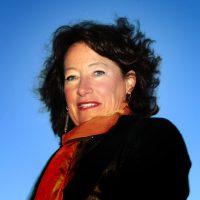

“My art is my life – all that I experience and see becomes part of my work. How I respond physically, spiritually and intellectually to my environment is the essence (the spirit) of my work.”
My work is not an exact representation of the landscape. My paintings are meant to capture the emotions and thoughts that the landscape invokes in me and in the viewer as they respond to the energy and spirit in my work. My intent in my work is to create a reverence for the landscape, the Earth and a consciousness that it feeds us physically, emotionally and spiritually.
Art and travel have always been part of my life. I studied in London and Japan and was invited to show at the Florence Biennale in 2005. I show in galleries internationally and nationally and have been included in the NYC Red Dot, the Miami Basel and the Palm Spring International Show. A few of my collectors are: Hilton Hotels, Windsor Park Hotel, Taiwan, Westinghouse Corporation, American Art, Imperial Bank of Canada.
“Debra Van Tuinen is an artist who is making things more beautiful. Her work consists of delightful contemplations of a twilight feel… The work evokes a tone ranging from Whistler to Rothko, and it acts to invite our contemplation and meditation. Gold leaf is evocative as twilight sun, as precious as gold. In general it makes the rest of the painting look poor. Debra’s ‘Old Growth/New Life’ is the most successful application of this technique I have ever seen. She has accomplished a miracle.” (John Spike, critic and Director of the Florence Biennale.)
“Mark Rothko’s atmospheric abstractions of the 1950’s and 60″s are a modern precedent for Van Tuinan’s ephemeral approach, emphasizing the sensory experience of color and light, dematerializing form. Rothko too, is a painter of American landscape, that place of expanse and light that defines a kind of New World romanticism. In the Pacific Northwest where Van Tuinen resides nature asserts itself strongly in the ever-present deep green forests, turbulent skies, and cold rushing streams. The Western landscape as subject matter can be said to represent an embodiment of a kind of romantic expressionism in its stunning beauty on a grand scale, evidence of the powerful transcendent spirit of the creative force behind all things.”
“The process that Van Tuinen uses is both ancient and innovative, as she continues to refine her craft to express her vision. She credits her five months in Japan in 1977 with a leap forward in her technical skills. It was at this time that she began a transition from the processes of intaglio printmaking into painting, eventually creating an encaustic process studio that enables her to make the best use of this technically demanding yet sensual medium.”(Doug Meyer’s essay, critic, Los Angles 2003)
Website
http://www.VanTuinenArt.com

